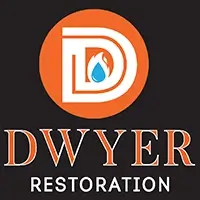Floods can be devastating, leaving behind a trail of destruction and chaos. However, with the right approach to complete flood restoration, you can restore your property and get back to normalcy. Here are some essential tips:
Safety First: Before you start any restoration work, ensure the safety of everyone involved. Turn off electricity, wear protective gear, and be cautious of structural damage. Floodwaters can carry contaminants, so it’s important to protect yourself from potential health hazards.
When entering a flooded area, wear appropriate personal protective equipment (PPE), including waterproof boots, gloves, and a mask. Avoid contact with floodwater, as it may contain sewage, chemicals, or other harmful substances. If you suspect structural damage, such as weakened floors or walls, proceed with caution and seek professional assistance if needed.
Assess the Damage: Conduct a thorough assessment of the damage caused by the flood. Document everything for insurance purposes and create a plan of action for restoration. Take photographs and videos of the affected areas, including any damaged belongings and structural components.
When assessing the damage, pay attention to the extent of water infiltration, visible signs of mold or mildew, and any structural issues. Identify areas that require immediate attention, such as standing water, damaged walls, or compromised electrical systems. Creating a detailed assessment will help you prioritize restoration tasks and communicate effectively with insurance adjusters and restoration professionals.
Remove Standing Water: Standing water can cause extensive damage and promote mold growth. Use pumps and wet vacuums to remove water as quickly as possible. The longer water remains in your property, the greater the risk of structural damage and mold infestation.
When removing standing water, start with the most affected areas and work your way to less affected spaces. Use pumps to extract large volumes of water and wet vacuums to remove residual moisture. Be thorough in your efforts to ensure that all water is removed, including from hidden areas such as crawl spaces, basements, and wall cavities.
Dry Out the Area: After removing standing water, dry out the affected area using dehumidifiers, fans, and open windows. Proper drying is crucial to prevent mold and mildew. High humidity levels can create an ideal environment for mold growth, so it’s important to reduce moisture levels as quickly as possible.
Place dehumidifiers and fans strategically to promote airflow and accelerate the drying process. Open windows and doors to increase ventilation, allowing fresh air to circulate and carry away moisture. Monitor humidity levels using a hygrometer and aim to maintain a humidity level below 60% to inhibit mold growth.
Clean and Disinfect: Floodwaters can bring in contaminants. Clean and disinfect all surfaces, furniture, and belongings to eliminate bacteria and prevent health hazards. Use a mixture of water and bleach or a commercial disinfectant to clean hard surfaces, paying special attention to areas that have come into contact with floodwater.
When cleaning and disinfecting, prioritize high-touch surfaces such as countertops, doorknobs, and light switches. Dispose of any items that cannot be effectively cleaned or disinfected, such as soaked carpets, upholstered furniture, and mattresses. Proper cleaning and disinfection will help create a safe and healthy environment for occupants.
Check for Mold: Mold can start growing within 24-48 hours after a flood. Inspect for any signs of mold and address them immediately with professional help if needed. Mold can pose serious health risks, so it’s important to take mold remediation seriously.
When inspecting for mold, look for visible signs such as discoloration, black spots, or fuzzy growth on surfaces. Pay attention to areas with high humidity levels, such as basements, bathrooms, and kitchens. If you discover mold, consider hiring a professional mold remediation company to assess the extent of the infestation and implement appropriate remediation measures.
Repair and Restore: Once everything is clean and dry, begin repairing and restoring your property. This might include replacing drywall, flooring, and insulation. Address any structural issues, such as damaged walls or compromised foundations, to ensure the stability and safety of your property.
When repairing and restoring, use materials that are resistant to water damage and mold growth, such as moisture-resistant drywall and treated wood. Consider upgrading your property’s insulation, electrical systems, and plumbing to prevent future flood damage. Working with a professional restoration contractor can help ensure that repairs are done correctly and efficiently.
Prevent Future Flooding: Take measures to prevent future flooding, such as improving drainage, installing sump pumps, and sealing any foundation cracks. Conduct a thorough assessment of your property’s vulnerability to flooding and implement appropriate mitigation measures.
To improve drainage, ensure that gutters and downspouts are clean and functioning properly. Consider installing a French drain system or grading your property to direct water away from the foundation. Installing a sump pump in the basement can help prevent water accumulation during heavy rains or flooding events. Additionally, seal any cracks or gaps in the foundation to prevent water infiltration.
By following these tips, you can effectively manage complete flood restoration and minimize the long-term impact on your property. Professional restoration services can also provide invaluable assistance in ensuring a thorough and safe restoration process. Remember that timely action is crucial to prevent further damage and restore your property to its pre-flood condition.
